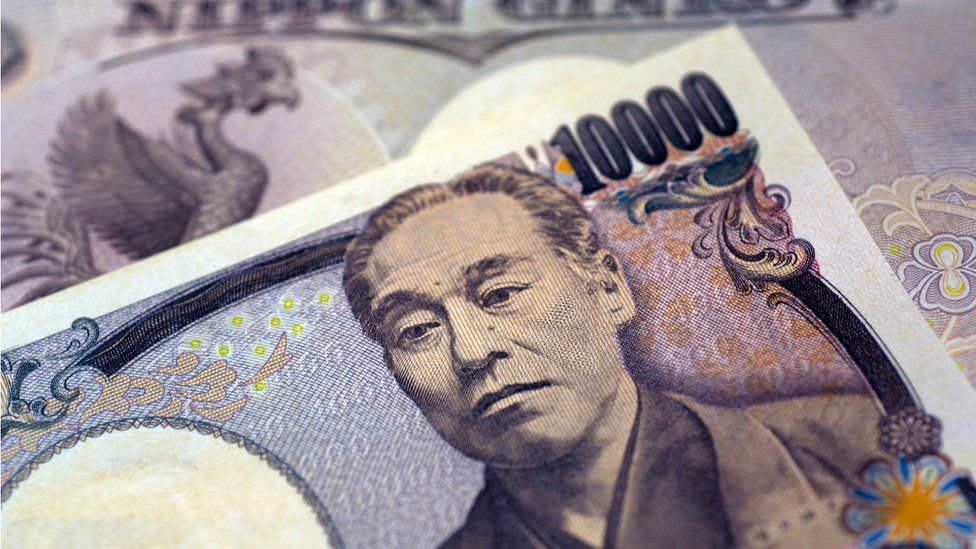ARTICLE AD BOX
 Image source, Getty Images
Image source, Getty Images
The yen has fallen sharply after Japan's central bank kept its ultra-low interest rates on hold as policy makers around the world hike cost of borrowing to tackle rising prices.
The Bank of Japan (BOJ) also says it will continue its programme of buying huge amounts of government bonds.
This week central banks in the US, UK and Switzerland have put up interest rates as they try to curb inflation.
The moves come as consumers struggle with the rising cost of living.
The BOJ held its target for short-term interest rates at minus 0.1% and said it expected to keep borrowing costs at "present or lower" levels.
It has been seen as a signal that the bank will continue to focus on supporting the economy's slow recovery from the pandemic, even as Japanese consumers start to see prices rise.
After the announcement, the US dollar climbed as high as 134.64 yen, not far from the 24-year peak of 135.6 it hit earlier this week.
So far this year the dollar has climbed by 15% against the yen, as the gap between interest rates in Japan and much of the rest of the world continues to grow.
The yen has fallen in value against other major currencies because higher interest rates tend to attract foreign investment. That increases demand for and the value of currencies of countries that have higher interest rates.
"I expect financial markets to continue to put pressure on the yen, potentially pushing it to well over 140 against the dollar, as the Bank of Japan insists on capping interest rates at near zero, while the rest of the world hastily embarks on tightening to get on top of surging, non-transitory inflation globally," Jeffrey Halley, Senior Market Analyst, Asia Pacific, OANDA told the BBC.
On Thursday, the Bank of England raised its main interest rate from 1% to 1.25%, pushing it to the highest level in 13 years.
That came after the US Federal Reserve on Wednesday announced its biggest rate rise in nearly 30 years as it increased rates by three-quarters of a percentage point to a range of 1.5% to 1.75%.
You may also be interested in:
Cost of living: Singapore chicken rice hit by export curbs

 2 years ago
45
2 years ago
45








 English (US) ·
English (US) ·